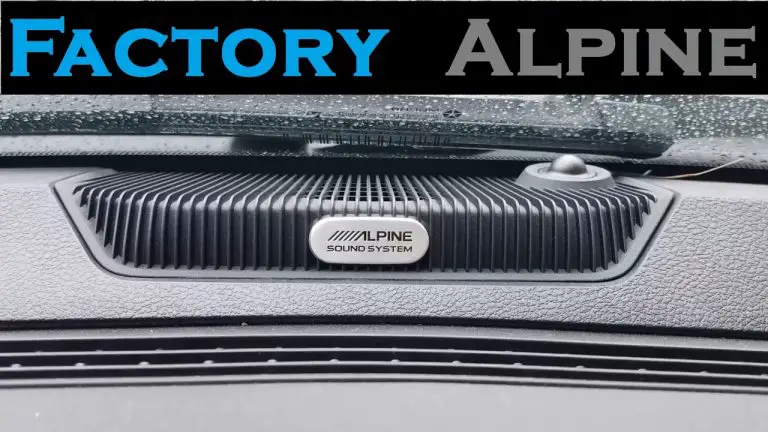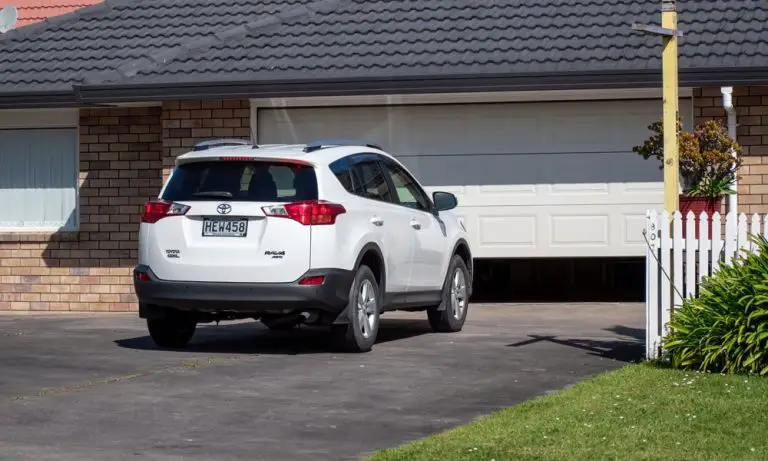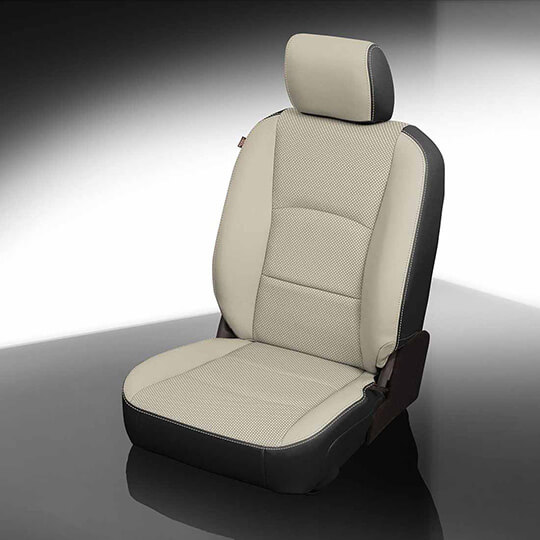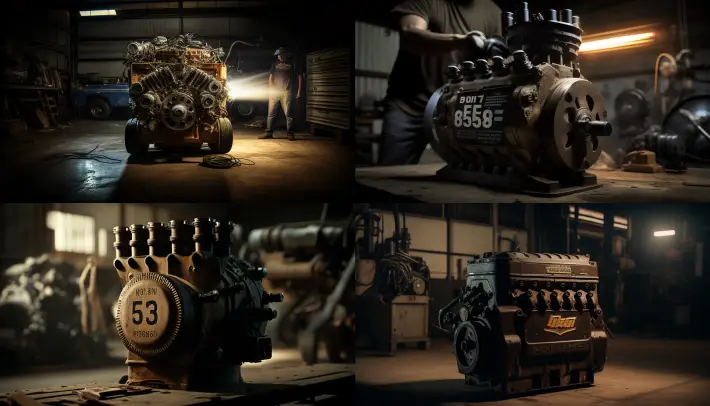How To Remove Speed Limiter On International Truck
As a proud owner of an International truck, you know the importance of performance and reliability in your daily operations. Whether it’s for transportation, construction, or towing, your truck needs to be able to keep up with the demands of the job.
However, you might have noticed that your truck’s performance is being held back by a built-in speed limiter.
This device is designed to restrict the top speed of your vehicle for various reasons, such as fuel efficiency, safety, and compliance with regulations. But what if you want to unleash your truck’s full potential and remove the speed limiter?
In this comprehensive guide, we’ll explore the ins and outs of speed limiters on International trucks, as well as the legal and technical aspects of removing them. We’ll cover the step-by-step process to safely and effectively remove the speed limiter from your International truck,
Related Article: How to Remove Rev Limiter On Dodge Ram
As well as alternative methods and considerations for maintaining your vehicle’s performance after the removal. So, buckle up and get ready to unlock your truck’s true capabilities as we delve into the world of speed limiter removal!
speed limit programming Freightliner Kenworth Peterbilt international
What is a Speed Limiter?
A speed limiter is a built-in feature commonly found on modern trucks, including international tractors, vans, and other heavy-duty vehicles. Speed limiters are designed to protect passengers and drivers from the dangers of high speeds by preventing vehicles from exceeding a pre-set speed.
Understanding Speed Limiters
How Speed Limiters Work
Hey there, friend! Let’s dive into the world of speed limiters and understand how they work. Speed limiters are electronic devices integrated into a truck’s engine management system. These devices govern the maximum speed by limiting the engine’s power output, preventing it from going beyond the preset limit. Think of it as an invisible leash that keeps your truck from running too fast.
Reasons for Speed Limitation
You might be wondering, “Why are speed limiters even necessary?” Great question! There are a few key reasons why truck manufacturers install these devices.
- Safety: A higher speed increases the risk of accidents, especially for large vehicles like trucks. Speed limiters help maintain a safer driving environment on the road.
- Fuel Efficiency: Limiting a truck’s top speed helps optimize fuel consumption, resulting in cost savings and reduced environmental impact.
- Regulatory Compliance: Many countries enforce speed limits for commercial vehicles, and having a speed limiter installed ensures compliance with those regulations.
The Potential Impact on Performance and Fuel Efficiency
You might be thinking, “What if I remove the speed limiter? How will it affect my truck’s performance?” Well, removing the speed limiter can potentially increase your truck’s top speed and improve acceleration.
However, it’s essential to consider that higher speeds may lead to increased fuel consumption and reduced fuel efficiency. Additionally, driving at higher speeds may cause additional wear and tear on your truck’s components, leading to more frequent maintenance requirements.
Keep in mind that removing the speed limiter might not be the best solution for everyone, as it can lead to potential drawbacks depending on your truck’s usage and the local regulations. But, if you’re still eager to explore this option, we’ll cover everything you need to know in the upcoming sections.
Legal Aspects of Removing Speed Limiters
Before diving into removing the speed limiter on your International truck, it’s crucial to understand the legal aspects surrounding this modification. After all, you wouldn’t want to unintentionally break any rules and face consequences, right?
Regulations and Laws by Country
The legality of removing speed limiters varies from country to country, and sometimes even by state or province. For instance, in the European Union, commercial vehicles with a gross vehicle weight (GVW) of over 3.5 tonnes are required to have a speed limiter installed.
In the United States, speed limiter requirements can vary by state, with some states enforcing regulations on specific types of vehicles or roads.
To ensure you stay on the right side of the law, it’s essential to research the speed limit regulations in your specific location. Familiarize yourself with local laws and consult with authorities if needed.
Potential Consequences of Non-Compliance
Removing your truck’s speed limiter without adhering to local regulations could lead to some unpleasant consequences. These may include fines, vehicle impoundment, or even loss of your commercial driving license.
Additionally, if you’re involved in an accident, the lack of a speed limiter may be used against you in legal proceedings or insurance claims, leading to potential liability issues.
Weighing the Pros and Cons of Removal
It’s essential to weigh the potential benefits and drawbacks of removing your truck’s speed limiter before making a decision. While increased performance and improved acceleration might be appealing, you should consider the legal, safety, and environmental implications of such a modification.
If you decide that the benefits outweigh the risks and you’re ready to proceed, the next sections will guide you through removing the speed limiter on your International truck safely and effectively.
Preparation for Speed Limiter Removal
Before you dive into removing the speed limiter on your International truck, proper preparation is essential. This will help ensure the process goes smoothly, and that you don’t run into any unexpected issues along the way.
Identifying the Type of Speed Limiter on Your International Truck
The first step is to identify the specific type of speed limiter installed on your truck. Speed limiters can be either mechanical or electronic. Electronic speed limiters are more common in modern trucks,
As they are integrated into the engine control module (ECM). Make sure to check your truck’s owner’s manual or consult with a qualified mechanic to determine the exact type of speed limiter in your vehicle.
Necessary Tools and Equipment
Once you know the type of speed limiter on your truck, gather the necessary tools and equipment for the removal process. For electronic speed limiters, you may require a specialized diagnostic tool or tuning software compatible with your truck’s ECM.
For mechanical speed limiters, you’ll need basic hand tools such as wrenches and screwdrivers. It’s also a good idea to have a torque wrench handy to ensure all fasteners are tightened to the manufacturer’s specifications.
Safety Considerations
Safety should always be a top priority when working on any vehicle. Before starting the speed limiter removal process, make sure to follow these safety precautions:
- Park your truck on a level surface and engage the parking brake.
- Disconnect the truck’s battery to prevent any electrical accidents.
- Wear appropriate personal protective equipment (PPE) such as gloves and safety glasses.
- If you’re unsure about any step of the process, consult a professional mechanic for guidance.
With the proper preparation, you’re now ready to proceed with removing the speed limiter on your International truck. In the next section, we’ll cover the step-by-step process to help you accomplish this task safely and effectively.
Step-by-Step Guide to Removing the Speed Limiter
Now that you’ve identified the type of speed limiter on your International truck and prepared the necessary tools, it’s time to remove the speed limiter. Keep in mind that this guide primarily focuses on electronic speed limiters since they are more common in modern trucks. If you have a mechanical speed limiter, we recommend consulting a professional mechanic for assistance.
Locate the Speed Limiter Module
- Refer to your truck’s owner’s manual or an online forum specific to your make and model to locate the engine control module (ECM). The speed limiter module is typically housed within the ECM.
- Access the ECM, which is usually located in the engine bay or under the dashboard on the driver’s side. It’s often enclosed in a protective casing that you’ll need to remove.
Disconnect and Remove the Module
- With the battery disconnected, carefully unplug any wiring harnesses connected to the ECM. Be sure to keep track of their proper placement for reinstallation.
- Remove any bolts or fasteners securing the ECM in place.
- Carefully lift the ECM out of its position and place it on a clean, stable surface.
Adjust or Replace Components
There are a few different methods to remove the speed limiter within the ECM:
- Reprogramming: You can use specialized diagnostic tools or tuning software to access the ECM’s settings and remove or adjust the speed limiter. This method is the most common and requires a compatible tool or software for your truck’s make and model.
- ECM Replacement: In some cases, you can replace the entire ECM with an aftermarket unit that has the speed limiter removed or adjustable. This method can be more expensive, but it may provide additional performance benefits.
Test Your Truck for Performance Improvements
- Once the adjustments or replacements have been made, reinstall the ECM and reconnect all wiring harnesses.
- Reconnect the truck’s battery and start the engine to ensure everything is functioning correctly.
- Test drive your truck in a safe and controlled environment, such as a private road or track, to assess performance improvements. Monitor your truck’s speed, acceleration, and any warning lights on the dashboard.
Remember that it’s essential to drive responsibly and adhere to local speed limits and regulations, even after removing the speed limiter. In the next section, we’ll discuss alternative methods for speed limiter removal and additional considerations.
Maintaining Your Truck After Speed Limiter Removal
After successfully removing the speed limiter from your International truck, it’s crucial to follow a proper maintenance routine to ensure your truck’s performance and longevity. Here are some essential tips for maintaining your truck after the speed limiter removal:
Routine Inspections and Maintenance
- Regularly inspect your truck’s critical components such as the engine, transmission, brakes, and suspension. Increased performance might result in additional wear and tear on these components, so staying on top of maintenance is essential.
- Follow your truck’s recommended service intervals as outlined in the owner’s manual. This includes oil changes, filter replacements, and other fluid checks.
- Inspect and replace worn or damaged tires as needed. A higher top speed might lead to faster tire wear, making it essential to keep an eye on tire condition and alignment.
Ensuring Optimal Fuel Efficiency and Performance
- Monitor your truck’s fuel consumption, as driving at higher speeds can lead to increased fuel usage. Adopt fuel-efficient driving habits such as gentle acceleration, maintaining a consistent speed, and avoiding excessive idling.
- Use high-quality fuel and oil that meet your truck’s specifications. This can help maintain optimal engine performance and longevity.
- Consider investing in performance-enhancing aftermarket parts, such as air intake systems, exhausts, and performance tuners. These upgrades can improve fuel efficiency and overall performance.
Staying Compliant with Regulations
- Remember that removing the speed limiter might not be legal in all jurisdictions. Always stay informed about the regulations in your area and ensure your truck remains compliant.
- If you travel between jurisdictions, be aware of varying speed limiter regulations and consider re-installing the speed limiter if required.
- Drive responsibly and adhere to speed limits at all times. Even with a speed limiter removed, it’s crucial to prioritize safety and comply with traffic laws.
By following these tips, you can maintain your International truck’s performance and ensure it remains reliable after the speed limiter removal. Always prioritize safety and compliance, and enjoy the enhanced capabilities of your truck responsibly.
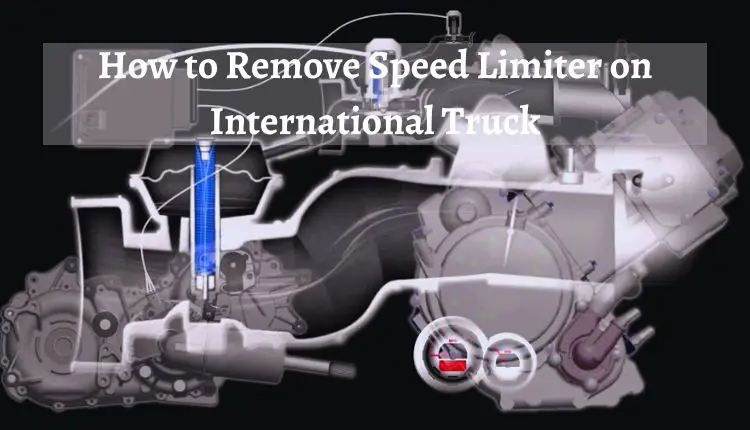
FAQs
How Do You Turn Off the Speed Limiter on a Truck?
To turn off the speed limiter on a truck, you can either reprogram the engine control module using specialized diagnostic tools or replace the module with an aftermarket one that doesn’t have a speed limiter.
Can You Remove a Top Speed Limiter?
Yes, you can remove a top-speed limiter, but it’s crucial to consider the legal, safety, and environmental implications.
How Can I Increase the Speed of My Truck?
To increase the speed of your truck, you can remove the speed limiter, upgrade performance-enhancing parts, or invest in engine tuning software.
How Do You Change the Governor on a Truck?
To change the governor on a truck, consult a professional mechanic as it typically involves accessing the engine control module or adjusting the mechanical governor, if present.
How Does a Governor on a Truck Work?
A governor on a truck works by limiting the engine’s power output, preventing the vehicle from reaching speeds beyond the preset limit.
How Can I Increase My Euro Truck Speed?
To increase your Euro Truck speed, you can remove or adjust the speed limiter using diagnostic tools or tuning software, as long as it’s legally allowed in your jurisdiction.
BYPASSING THE SPEED GOVERNOR ON A COMPANY TRUCK
Conclusion
Removing the speed limiter on your International truck can be an exciting prospect for unlocking its full potential and enhancing its performance. However, it’s crucial to consider the legal, safety, and environmental implications before proceeding with such a modification.
Before embarking on the speed limiter removal process, ensure you understand your local regulations and weigh the potential benefits against the drawbacks. If you decide to move forward, always take the necessary precautions and follow the proper procedures to ensure a successful outcome.
After the speed limiter has been removed, maintain your truck’s performance and longevity through regular inspections, adhering to service intervals, and investing in performance-enhancing upgrades when appropriate. Most importantly, always prioritize safety and responsible driving, even with your truck’s newfound capabilities.
By following this comprehensive guide, you can make an informed decision about speed limiter removal and, if you choose to proceed, enjoy the improved performance of your International truck responsibly.
Related Articles:
- 2013 Ram 1500 6 Speed Transmission Problems
- Ram 1500 8 Speed Transmission Problems
- 2020 Ram 1500 Speed Limiter Removal
- 2001 Dodge Ram 1500 Speedometer Not Working
- Why Does My Speedometer Bounce


